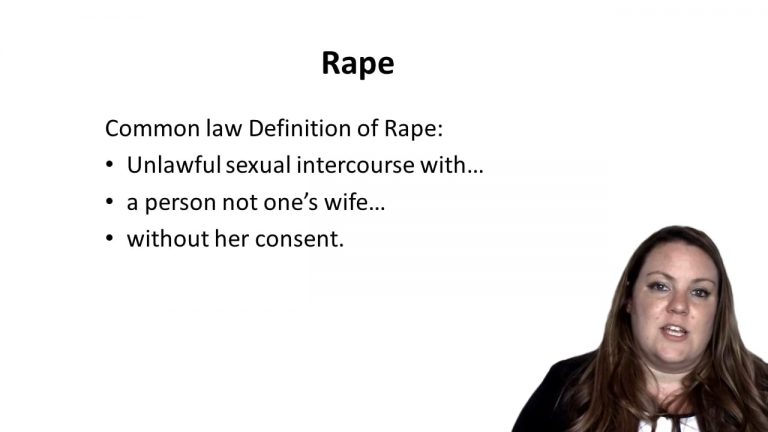SmartBrief
Confirm favorite deletion?
Criminal Law Keyed to Ohlin
State v. Jones
Citation:
2011 WL 4011738 (2011)Facts
A.S. was engaged with children. However, her and the defendant had been having a sexual relationship for approximately four years. On May 22, 2008, they decided that they should end their affair. The next morning, they engaged in consensual sex. Afterwards, A.S. went to the bathroom and when she returned to the bedroom, she saw the defendant looking at pornographic material.
He sat next to her on the bed and began to touch her. A.S. told him that she thought they had decided that they weren’t going to have sex anymore. The defendant reacted by getting up, walking around behind her, and unfastening his pants. A.S. protested that she did not want to engage in intercourse, but he pushed A.S. down to where she couldn’t get up and her arms were pinned beneath her body. The defendant proceeded to have intercourse with her.
After, he apologized and asked if she was alright. He told her that she could press charges if she wanted to because he was out of line and lost control. A.S. called a women’s center and told them she had been raped.
A.S. stayed in contact with the defendant, and on May 27, he came over to watch movies at her residence. A.S. testified that she was taking a prescribed anti-anxiety medication that caused her to be drowsy. Due to her drowsiness, she laid down on the couch in the living room while the defendant used her computer in the bedroom. At some point, he went to the couch and began to stroke her hair. A.S. testified that he pulled her hair, but she did not respond and pretended to be asleep. The defendant then grabbed her breasts, forcefully touched her private area, and proceeded to engage in intercourse with her while she was lying on the couch and not moving. A.S. testified that she was “paralyzed by fear” and neither physically resisted Jones nor made any verbal protest.
The jury convicted the defendant of two counts of forcible rape, based on the May 22 incident and the May 27 incident. He appealed, arguing that the state failed to prove that A.S. physically resisted him.
Only StudyBuddy Pro offers the complete Case Brief Anatomy*
Access the most important case brief elements for optimal case understanding.
*Case Brief Anatomy includes: Brief Prologue, Complete Case Brief, Brief Epilogue
- The Brief Prologue provides necessary case brief introductory information and includes:
Topic:
Identifies the topic of law and where this case fits within your course outline.Parties:
Identifies the cast of characters involved in the case.Procedural Posture & History:
Shares the case history with how lower courts have ruled on the matter.Case Key Terms, Acts, Doctrines, etc.:
A case specific Legal Term Dictionary.Case Doctrines, Acts, Statutes, Amendments and Treatises:
Identifies and Defines Legal Authority used in this case.
- The Case Brief is the complete case summarized and authored in the traditional Law School I.R.A.C. format. The Pro case brief includes:
Brief Facts:
A Synopsis of the Facts of the case.Rule of Law:
Identifies the Legal Principle the Court used in deciding the case.Facts:
What are the factual circumstances that gave rise to the civil or criminal case? What is the relationship of the Parties that are involved in the case.Issue(s):
Lists the Questions of Law that are raised by the Facts of the case.Holding:
Shares the Court's answer to the legal questions raised in the issue.Concurring / Dissenting Opinions:
Includes valuable concurring or dissenting opinions and their key points.Reasoning and Analysis:
Identifies the chain of argument(s) which led the judges to rule as they did.
- The Brief Prologue closes the case brief with important forward-looking discussion and includes:
Policy:
Identifies the Policy if any that has been established by the case.Court Direction:
Shares where the Court went from here for this case.
Topic Resources

 3m 19s
3m 19s